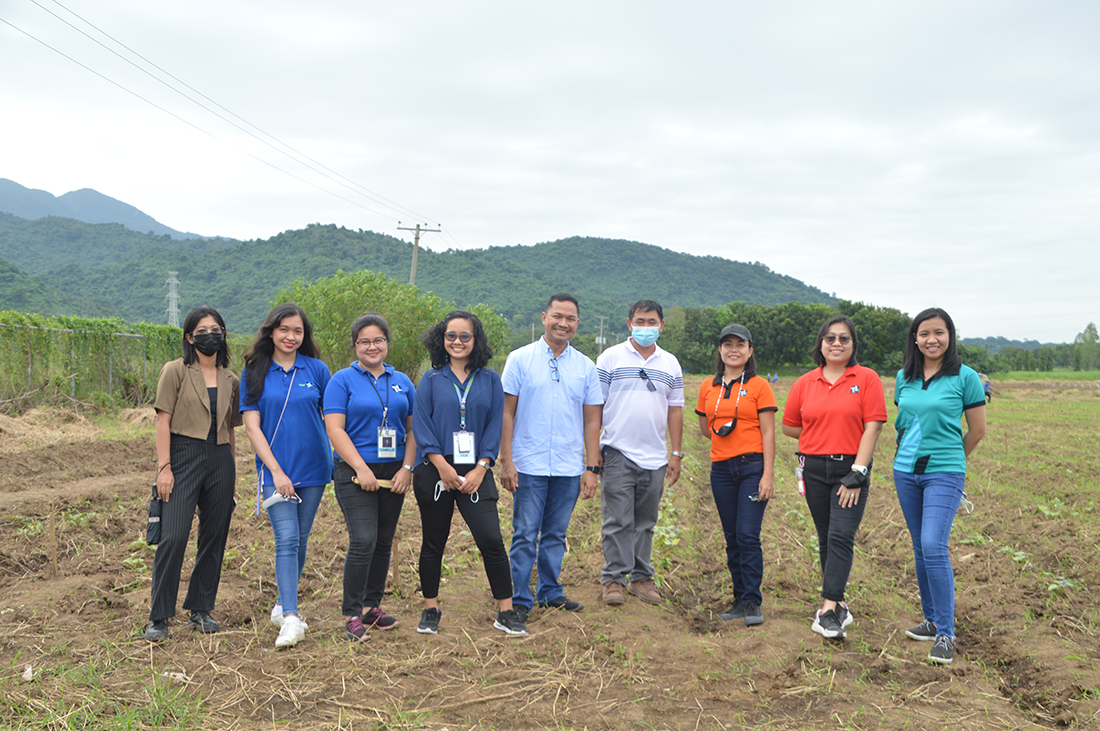An ongoing project led by the University of the Philippines Los Baños (UPLB) has identified 12 high-yielding sweetpotato accessions with high beta-carotene and anthocyanin content through the use of molecular markers, chemical analysis, and morphological characterization.

Morphology of the top-performing orange (left) and purple (right) sweetpotato accessions. (Image credit: ICropS-CAFS, UPLB)
The three-year project, “Molecular Marker Assisted Breeding of Sweetpotato Varieties for High Beta-carotene, Anthocyanin and Resistance to Sweetpotato Feathery Mottle Virus (SPFMV),” is funded by the Philippine Council for Agriculture, Aquatic and Natural Resources Research and Development of the Department of Science and Technology (DOST-PCAARRD). It aims to meet the commercial demand for an increased yield in sweetpotato production and help alleviate the nutritional deficiency in the country.
Project Leader Antonio G. Lalusin of the Institute of Crop Science,College of Agriculture and Food Science (ICropS-CAFS), UPLB reported during a project review that 264 sweetpotato accessions, including 63 released varieties, were collected and evaluated using molecular and morphological markers. In addition, 53 new hybrids were produced and are currently being maintained and evaluated in the field.
Purple-fleshed sweetpotatoes are rich in anthocyanin, while orange-fleshed accessions are rich in beta-carotene.
Anthocyanin is the natural pigment that gives plants their blue and red colors. Since it is also known as an antioxidant, it is currently being studied for its potential against cancer and diabetes.
On the other hand, beta-carotene, which gives theyellow and orange colors, is also an antioxidant and a great source of vitamin A.
During molecular characterization, nine purple- and five orange-fleshed sweetpotatoes were chosen as parentals for breeding based on their anthocyanin and beta-carotene content, which are higher compared with check varieties used in the project.
A preliminary yield trial conducted by the team found that a cross between introduced purple sweetpotato varieties from Japan (Haponita x Haponita2) and another cross with a local variety (Haponita x NSIC Sp20) performed best during dry and wet seasons, respectively. After this, promising accessions were advanced to the general yield trial while simultaneously subjecting them to SPFMV-resistance screening using reverse transcription-polymerase chain reaction (RT-PCR) with gene-specific markers.
SPFMV is an aphid-transmitted virus that significantly reduces the yield of sweetpotato worldwide. It typically produces mild to no symptoms. When combined with other virus such as the Sweetpotato Chlorotic Stunt Virus (SPCSB), it can cause internal cork or ‘kulot’ in the leaves or cracks in the tubers, which lowers crop quality and yield.

DOST-PCAARRD Team together with Project Leader Dr. Antonio G. Lalusin during the field and monitoring visit at UPLB. (Image credit: Crops Research Division, DOST-PCAARRD)
Initial screening for SPFMV resistance found that eight out of the 12 high-yielding accessions (six purple-fleshed and six orange-fleshed) exhibited putative resistance, while the rest showed tolerance against the virus.
Other ongoing activities of the project include propagation of sweetpotato planting materials with desirable traits, yield trials, and preparation for possible varietal registration of top-performing orange- and purple-fleshed sweetpotato to the National Seed Industry Council (NSIC).
These accomplishments were confirmed by DOST-PCAARRD’s Crops Research Division (CRD) during a field monitoring visit to the project's experimental sites at UPLB.
